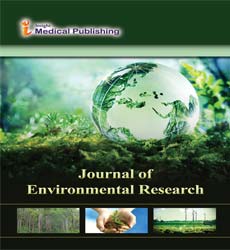Indian Orchid Conservation : Current Study and Challenges
Abstract
Statement of the Problem: India, situated in the lap of Himalayas, harbors a rich diversity of orchid flora and the numerical strength of Indian orchids is about 1256 species in 155 genera; amongst these 307 are endemic species. Orchids are the herbaceous plants of the family Orchidaceae which is considered to be the most successful of all plant families due to a large number of species and a wide variety of unique morphological and anatomical adaptations. They are highly valued floriculturally as well as medicinally important plants and also regarded as ecological indicators. However, many orchid species are now considered to be at risk of extinction as a result of various anthropogenic activities, natural calamities and illegal harvesting for horticulture, medicine, food etc. All of the Indian orchid species are included in Appendix II except 10 species of Paphiopedilum and Renanthera imschootiana which are in Appendix I. These plants have low propagation rate and show very slow growth using conventional propagation methods. As a result, there is an urgent need to achieve a balance between orchid conservation and market demand for medicinal as well as floricultural importance world-wide.
Methodology and Theoretical Orientation: Successful orchid germination relies on factors (biotic and abiotic) that generally influence the success of plant seeds. Consideration of symbiosis is one of the key factors for the restoration of declining orchid populations. Orchid seed germination is extremely complex and seeds cannot germinate under natural conditions unless they are colonized with compatible mycorrhizal fungus that supplies nutrients to them.
Findings: To overcome these hurdles and to restore orchid populations in their natural habitats, a number of in situ (biosphere reserves) and ex situ conservation (botanical gardens, orchid sanctuaries, plant tissue culture laboratory) strategies have been used. In recent past years, in vitro culture methods of propagation (in vitro seed germination) have been used to reduce collection pressures on their wild populations and additionally, orchids are regenerated through explants (leaf, root, rhizome, shoot meristem, axillary bud, pseudobulb, tuber etc.).
Conclusion & Significance: A better understanding of germination and seedling establishment is needed for conservation of orchid populations. An experimental approach and establishment of protocols for germination and regeneration is required which will provide the means for large-scale production of these floriculturally as well as medicinally important orchids, as well as a basis for further research. Also, successful conservation actions require joint efforts of scientists/communities on the local, national, regional, and international levels.
Open Access Journals
- Aquaculture & Veterinary Science
- Chemistry & Chemical Sciences
- Clinical Sciences
- Engineering
- General Science
- Genetics & Molecular Biology
- Health Care & Nursing
- Immunology & Microbiology
- Materials Science
- Mathematics & Physics
- Medical Sciences
- Neurology & Psychiatry
- Oncology & Cancer Science
- Pharmaceutical Sciences
